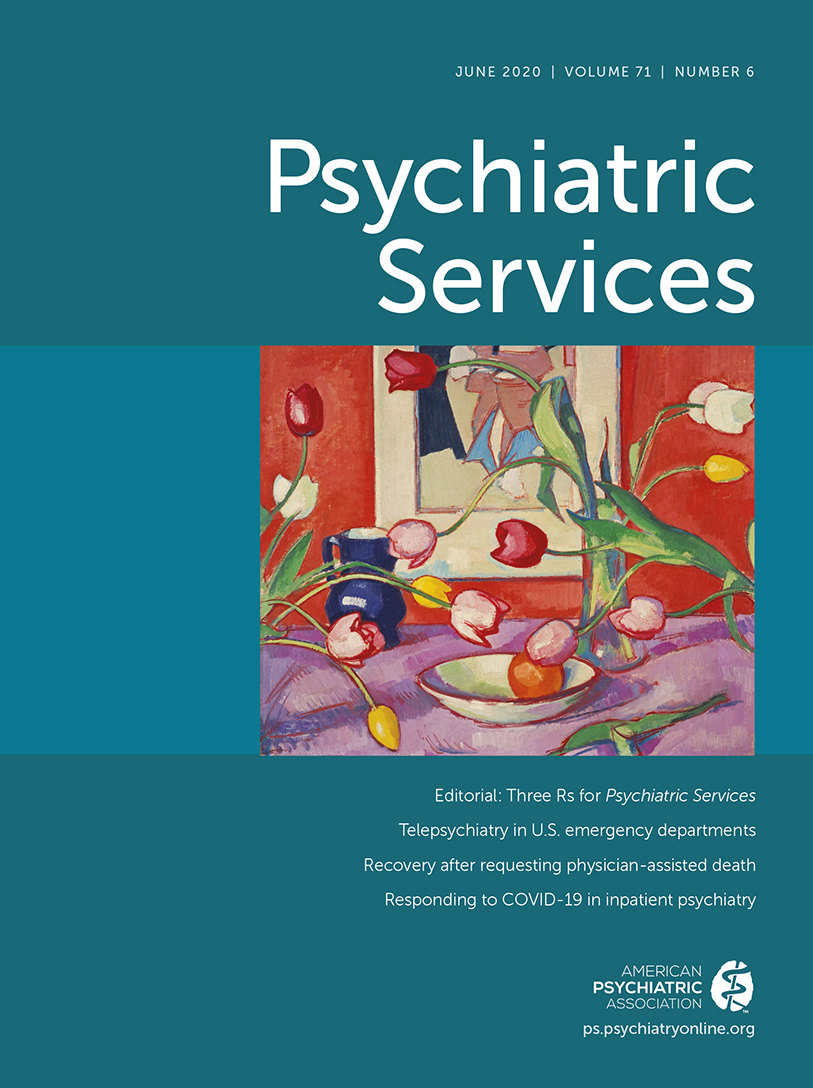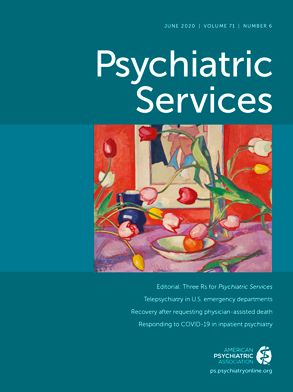Fresh out of my residency training in psychiatry, I treated a man who had spent 5 years in prison for setting fire to a sign outside a restaurant. He was under the delusion that God wanted him to do so. During his incarceration, his schizophrenia was poorly treated. He was put in solitary confinement, which only worsened his psychosis, as any form of torture would. His turmoil escalated to the point that he plucked out his eyeballs, blinding himself. When he was finally ready to talk with me about this experience, after we had been working together for nearly 3 years, I asked about his state of mind on the day he removed his eyes. “I thought I was there to be tortured,” he said. “I was convinced that was what they were going to do to me, and I decided I would rather do it myself.”
During the second half of the 20th century, the use of “insane asylums” in the United States to limit (via medical authority) the freedom of those exhibiting deviant behaviors was supplanted by the use of prisons, such that people with serious mental health conditions have been policed and confined not because of their disability but because they broke laws. But the result has been the same: they are locked up and subjected to inhumane conditions. French philosopher Michel Foucault, who wrote extensively about the histories of both psychiatry and the penal system, described the use of confinement in the two institutions. In both psychiatric hospitals and prisons, social control is exerted through observation, whether in the form of the physician’s “clinical gaze”—which may make patients feel the inevitably dehumanizing separation of their body and symptoms from their true personhood—or of the prison warden’s “panopticon,” in which the inmate is subjected to constant surveillance. But even with intense observation, were these people ever truly seen?
Last fall, a friend invited me to a panel discussion titled “Imagining a World Without Cages” at a local university. It was my first exposure to the prison abolition movement. I had heard of prison reform, of course. But that evening, I realized that “prison reform” makes as little sense today as “slavery reform” would have made in the 1860s.
In March 2019, I began working at a public mental health clinic tailored to individuals with ties to the criminal justice system. One morning, I was asked to evaluate Mr. D, a 47-year-old man whose parole officer mandated that he undergo substance abuse treatment after a positive urine drug screen. He told me about acts of brutality he had helplessly witnessed during his 17 years in prison, including a gang rape that occurred after the victim’s skull was fractured from being bashed against a wall. At one point, a guard inaccurately believed that Mr. D had insulted him and later entered his cell with another guard, handcuffed Mr. D, and savagely beat him. “I swear this is true, this happened,” Mr. D insisted, and I had to assure him that I believed him—of course I believed him. I told him it had not even occurred to me to question his legitimacy; I had heard far too many similar stories Since his release from prison, Mr. D had lived in a near-constant state of fear.
At the end of the interview, I offered Mr. D psychoeducation about complex posttraumatic stress disorder. Furthermore, I told him that I am a prison abolitionist and that I was sorry for the torture he had endured at the hands of the state. He looked at me, incredulous. I suspected it was the first time someone had expressed compassion for him as a victim of an oppressive system rather than as someone who had gotten what he deserved for whatever crime he had committed.
As he left, I gave him one of the business cards I had designed. For the background, I had chosen a picture of a barbed-wire fence being broken by birds that were flying away to freedom. He accepted my card, and when he saw the image on it, he burst into tears. After he left my office, I sensed his relief that he finally felt seen, not with a Foucauldian “clinical gaze” but with a more humanistic appreciation that can be accomplished only outside systems of oppression.
One busy afternoon in the clinic last month, I quickly reviewed the chart for Mr. O, a 55-year-old man who was scheduled for a psychiatric evaluation update, which meant he was reengaging in services after his case had been closed. When we started the interview, his voice sounded hostile as he responded to my questions. “It should all be in my medical record,” he grumbled. I apologized, explaining that it was sometimes more helpful for me to ask the questions myself so I could get information from him directly. “I understand,” he said. “I’m just pissed off they closed my case.” He had missed appointments and had not responded to outreach attempts, and clinic policy was to close cases after 6 months without contact. “Do you want to know why I didn’t return them calls?” he asked me.
Mr. O had been arrested for breaking and entering shortly after his last appointment. Because of his prior record (he had spent 30 years incarcerated for various charges), his bond had been set at an alarmingly unaffordable $50,000. As a result, he had been jailed for 6 months, awaiting his hearing. When he finally went before a judge, the charges were dropped, and he was released.
The public often ignores the harsh reality that many people in jails are in the pretrial phase of their legal cases. They have not been convicted of a crime; they simply cannot afford bail. But while these people are incarcerated, they cannot go to work or pay their rent, so they often lose their jobs and are evicted. Mr. O had been released from jail to find himself not only unemployed and homeless but also without a mental health provider. To reopen his case at the clinic, he would have to repeat the lengthy intake process even though he had run out of his medications.
After Mr. O told me his story, I awkwardly apologized for how our clinic policies can sometimes impose unnecessary barriers to getting help. After our meeting, as he checked out at the front desk, I overheard him explaining to the clerk that his visit had taken longer than expected, and his 2-hour bus transfer had expired. He asked if any free bus passes were available, and the clerk responded that there were none today.
Later that afternoon, a nurse knocked on my office door and said, “Hey doc, I think someone just broke into your car.” I went outside to find my car window smashed and my purse gone. An employee from the store next to the clinic told me he had seen who had done it. “He went that way,” he told me, gesturing across the street. “He had a cane. He couldn’t have gotten far.” I followed his gaze across the street, where I saw Mr. O limping away. He could not have known it was my car he was breaking into. He just saw a purse left in plain sight. Feeling wounded but knowing I had patients waiting for me, I said nothing and headed back inside.
Throughout the remainder of the afternoon, a few coworkers dropped by my office to check in. One asked me if I had called the police. It had not even occurred to me to do so. How absurd would it be for the psychiatrist in the jail diversion program to call the police on her own patient? The man had no way to return to the homeless shelter he was forced to stay in because he had lost his housing during the months he had been locked up for a crime he was never charged with. Simply by virtue of being a tax-paying citizen, I felt I had been complicit in every injustice he had suffered. How could I put him back in a cell for trying to survive?
His case manager asked me if I thought we should ban him from the clinic. “If he shows up to his next appointment with me, I will see him,” I responded.
I will see him.

